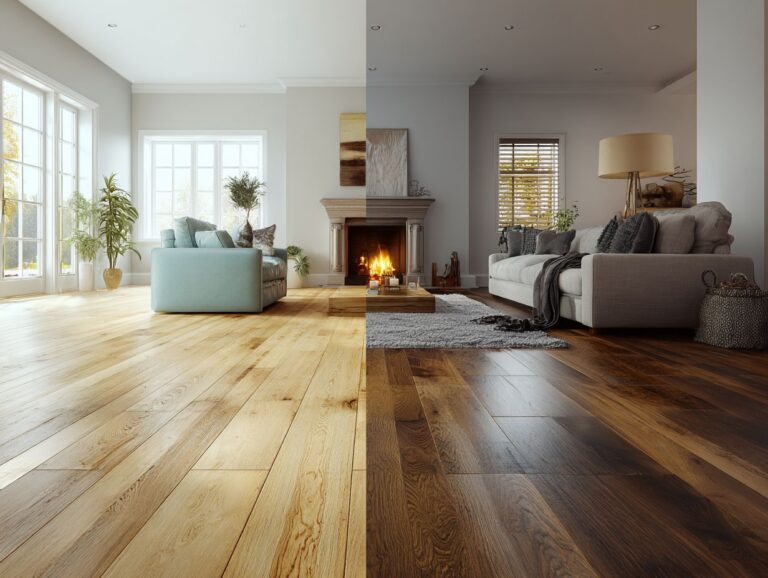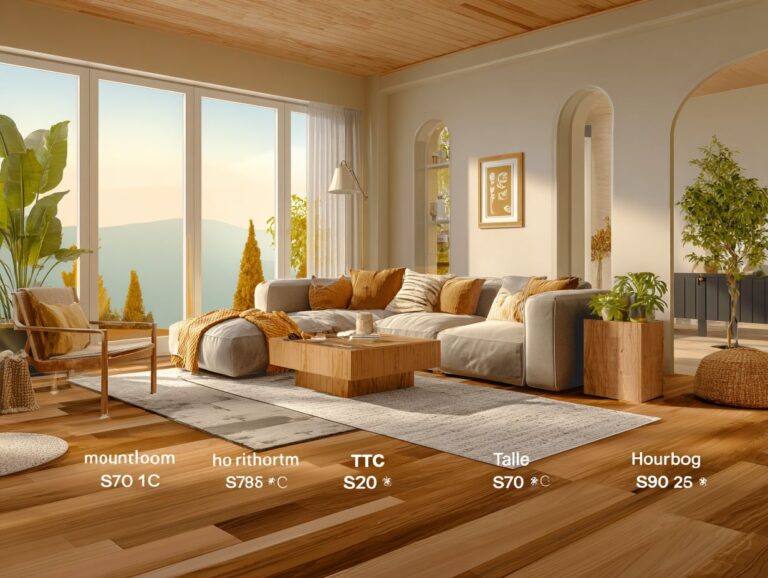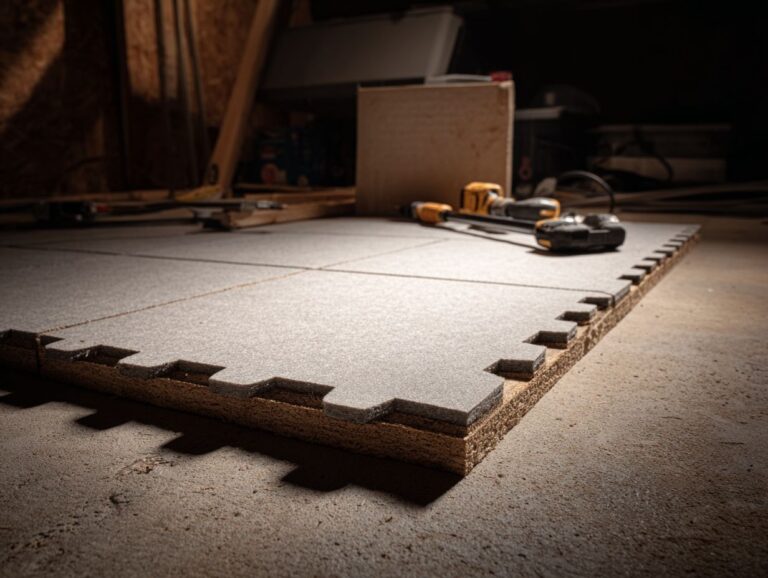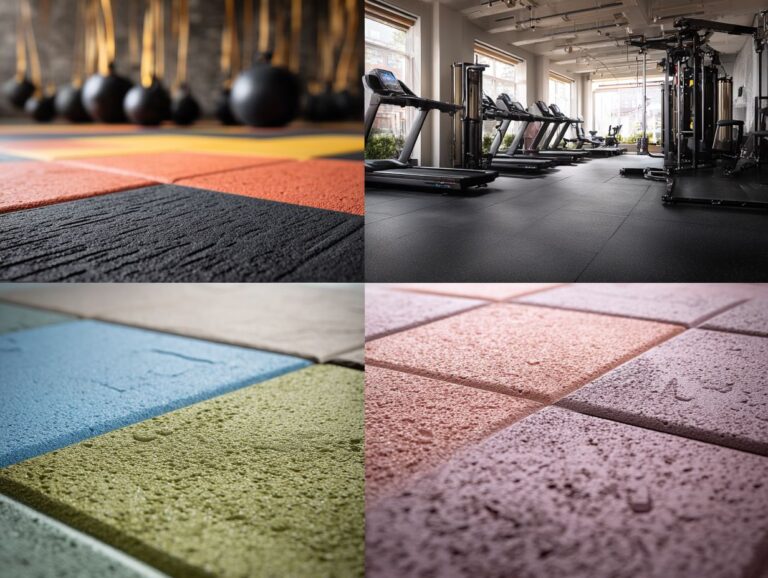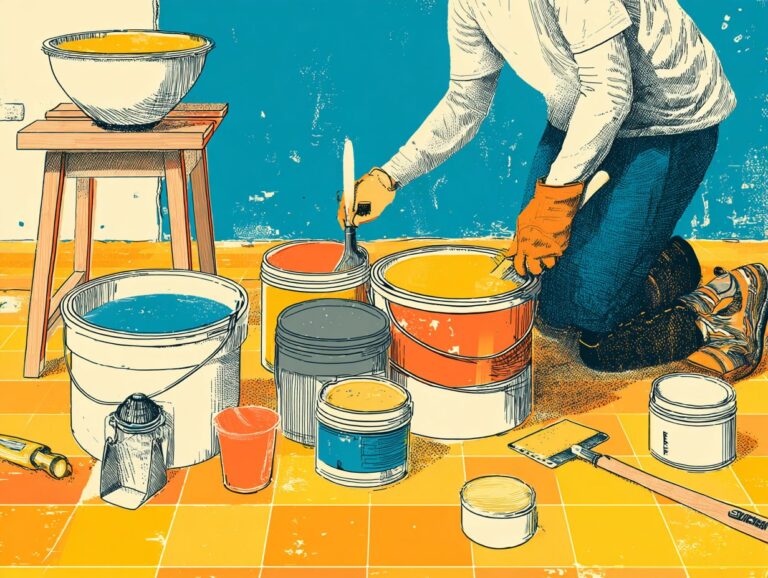Dustless Sanding Systems – Benefits and Process
Dustless sanding systems are changing how we refinish hardwood floors by improving traditional sanding methods. They create a cleaner environment and improve health by reducing airborne dust. This article explains the dust-free sanding process, focusing on its benefits compared to traditional methods and how it can improve your home while providing a safer and more practical work environment. Find out why using dustless sanding is a good idea for your next flooring job!
Key Takeaways:
Contents
- Benefits of Dustless Sanding Systems
- Dustless Sanding Market Data
- Components of Dustless Sanding Systems
- The Sanding Process
- Comparative Analysis
- Common Applications
- Frequently Asked Questions
- What are dustless sanding systems and what are their benefits?
- How does a dustless sanding system work?
- What types of projects can benefit from the use of a dustless sanding system?
- Are there any health risks associated with traditional sanding methods?
- Is a dustless sanding system more expensive than traditional sanding methods?
- How do I choose the right dustless sanding system for my project?
Definition and Overview
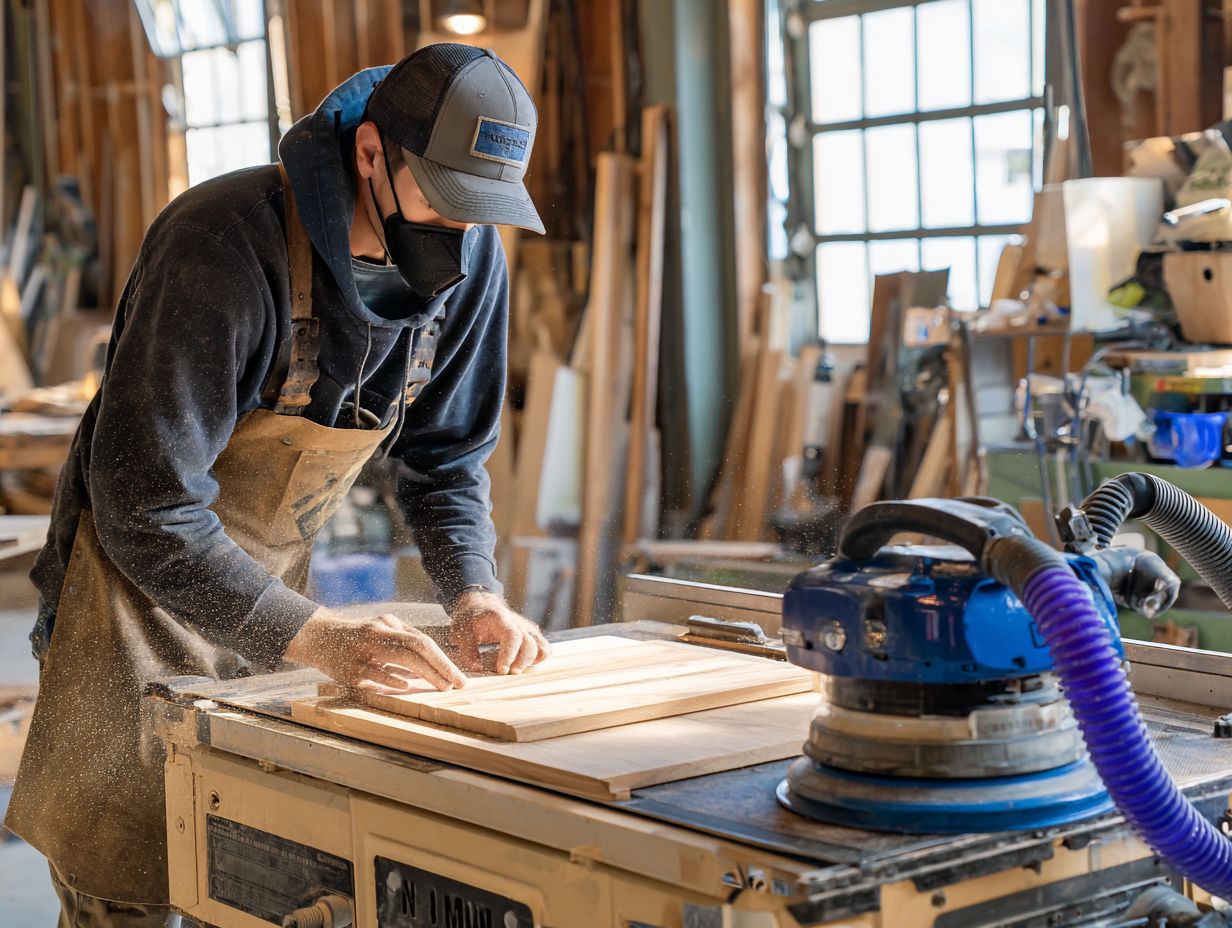
Dustless sanding systems use modern vacuum systems and effective filters to collect dust made during sanding.
These systems typically consist of a sander equipped with a dust collection port, connected to a vacuum. The combination significantly reduces airborne dust, promoting a cleaner workspace.
For instance, the Festool DTS 400 EQ sander, paired with the CT 26 E dust extractor, creates a nearly dust-free environment. This setup makes the air cleaner and clearer, which helps with sanding accuracy.
Also, many dustless sanders come with replaceable filter bags. This makes them durable and easy to clean, making them a good choice for both professionals and DIY enthusiasts.
Historical Context
Traditional sanding methods produced a lot of dust, causing health problems and environmental issues, which led to the creation of dust-free systems.
Historically, sanding relied on abrasive materials that produced airborne particles, causing respiratory problems and polluting work environments.
The shift to dustless sanding began in the 1990s, driven by stricter safety regulations and growing public awareness of occupational hazards.
Modern dustless sanding systems, utilizing vacuum attachments, significantly reduce airborne dust during the process. For instance, tools like the Festool ETS 150 or the Mirka DEROS are equipped with integrated dust extraction, capturing up to 99% of dust at the source.
This change improves worker safety and the quality of the final product.
Benefits of Dustless Sanding Systems
Sanding systems with dust control improve working conditions for users and improve the quality of the final result.
They significantly improve air quality and contribute to the project’s success.
Dustless Sanding Market Data
Dustless Sanding Market Data
Choosing the right flooring treatment can significantly impact the aesthetics and longevity of your floors. While both methods have their pros and cons, screening and recoating versus full sanding and refinishing offers a comprehensive comparison that helps you decide based on your specific needs.
Market Growth Projections: Market Size
The Dustless Sanding Market Data gives information about the expected increase and economic possibilities in the dustless sanding industry over the next ten years. This sector is gaining traction due to increasing demand for cleaner, more efficient sanding methods in construction, renovation, and industrial applications.
Market Growth Projections indicate a positive trend in market expansion. The market value in 2024 is estimated at $250 million serving as a foundation for upcoming expansion. By 2033, the market is projected to reach a substantial $400 million. This expansion is highlighted by a yearly average growth rate of 5.5% from 2026 to 2033, reflecting strong and sustained interest in dustless technology.
- The shift towards dustless sanding solutions can be attributed to heightened awareness of occupational health and safety, as traditional sanding methods contribute significantly to airborne dust, impacting both worker health and environmental quality.
- Technological advancements and innovations in dust collection systems have made these solutions more accessible and cost-effective, encouraging adoption across various sectors, including residential, commercial, and industrial markets.
The projected growth in the dustless sanding market signifies a promising opportunity for manufacturers and service providers to capitalize on the trend towards more sustainable and health-conscious construction practices. By continually coming up with new ideas and making dustless sanding technologies more efficient and effective, companies can establish themselves as top competitors in this changing market.
Health Benefits
Employing dustless sanding significantly reduces the release of harmful wood dust into the air, promoting better indoor air quality and safeguarding respiratory health.
This method removes up to 95% of airborne wood dust during sanding, which helps protect both workers and residents.
To maximize the benefits, use high-efficiency particulate air (HEPA) filters in conjunction with your sanding equipment. Tools like Festool’s CT Dust Extractor can be used with their sanders to capture dust directly from the source.
Using a dust mask rated N95 or higher reduces the chance of breathing in harmful particles, leading to a safer work environment.
Environmental Impact
Dustless sanding systems contribute to a cleaner environment by minimizing particulate pollution and adhering to sustainable practices that reduce waste during the refinishing process.
These systems can reduce dust emissions by up to 90% compared to traditional sanding methods, drastically cutting down on airborne particulates. This makes indoor air cleaner and reduces the need for large cleanup tasks, cutting down on waste.
Tools like the Festool DTS 400 EQ sander or the Mirka DEROS are designed to effectively clear dust, making them excellent choices for contractors who care about the environment. By investing in these systems, professionals improve their service and help make the planet healthier.
Efficiency and Time-Saving
Dustless sanding systems can cut project times in half, allowing professionals to complete jobs more quickly while minimizing the need for extensive post-project cleanup.
For example, using a system like Festool’s ROTEX RO 150, which combines sanding and polishing in one tool, can make the process much easier.
By adding a vacuum attachment, it catches dust and cuts down on both air pollution and cleaning time by up to 60%. Professionals often report finishing projects in about two-thirds the time compared to traditional methods, allowing them to take on more work or complete projects with greater efficiency.
Quality of Finish
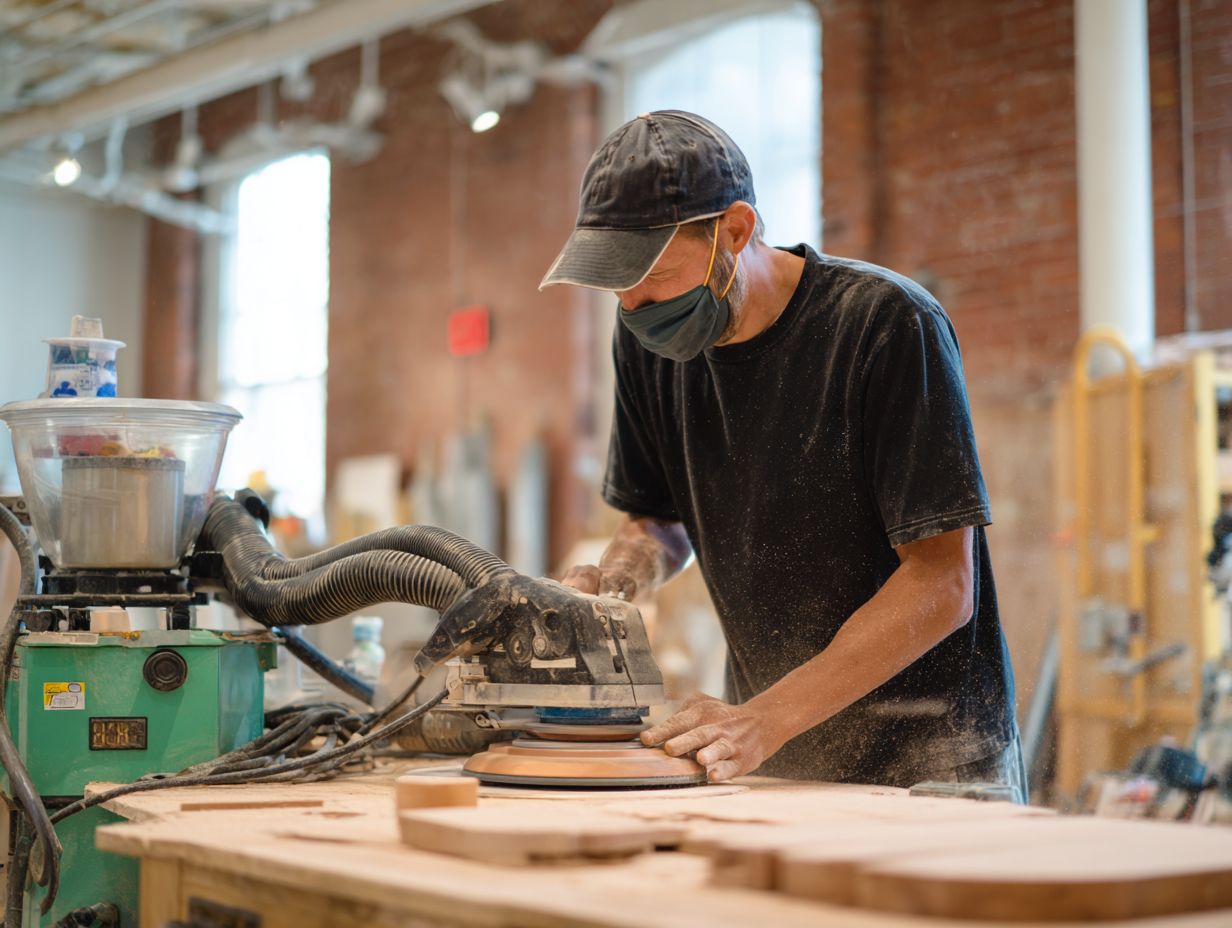
Using dustless sanding methods gives hardwood floors a smooth surface, leading to strong and visually pleasing finishes.
Dustless sanding minimizes airborne particles, leading to a smoother surface ready for finishes. This method works well for high-quality products like Loba’s Hardwax Oil, which soaks in deeply and provides strong protection.
Brands like Bona offer water-based finishes that dry clear and prevent yellowing, which makes them great for lighter woods. Using dustless sanding results in a better surface, reduces cleaning time, and makes the air cleaner during refinishing.
Components of Dustless Sanding Systems
Effective dustless sanding systems consist of key parts, such as specific sanding machines, strong vacuum systems, and modern filtration units that operate smoothly together.
Sanding Machines
Machines like the Mirka DEROS and Clark’s Hardwood Floors’ sanding equipment are engineered for dustless operation, providing efficient sanding with minimal dust release.
The Mirka DEROS, priced at $599, features a lightweight design that makes it easy to maneuver while producing less noise. It integrates seamlessly with dust extraction systems, ensuring your work area stays clean.
Clark’s sanding machines, priced between $1,200 and $3,000, include strong features like adjustable speed settings and multiple sanding pad sizes suitable for different materials. People often say that these machines make the air cleaner and save time spent on cleaning. They are good purchases for both professional builders and those doing projects at home.
Vacuum Systems
High-efficiency vacuum systems are critical for effective dustless sanding, with models like the Festool CT 36 demonstrating superior dust extraction capabilities.
The Festool CT 36 costs $599 and is praised for its powerful suction and low noise, making it ideal for job environments.
The Makita XCV11ZB is another excellent choice. It offers similar performance to other options but costs around $349, making it a favorite among DIY enthusiasts.
If you’re on a budget, the Craftsman CMXEVBE17595, priced at about $99, provides solid suction for small jobs.
Choose a model based on your specific needs, room size, and frequency of use to maintain a clean and safe workspace.
Filters and Accessories
Using HEPA filters in dustless sanding systems provides a critical layer of protection against airborne particles, ensuring compliance with health standards.
To improve dust control, use high-quality HEPA filters, which usually cost about $50 each. Pair these with accessories like adjustable vacuum hoses and pre-filters.
The flexible hoses make sanding easier by allowing you to move and reach small areas. Pre-filters, with an additional cost of about $15, capture larger particles before they reach the HEPA filter, extending its lifespan.
Using these tools helps protect air quality during sanding and keeps the workspace cleaner, allowing the project to proceed more smoothly.
The Sanding Process
The sanding process in dustless systems follows a set of carefully organized steps to reduce dust exposure and make the process as efficient as possible.
Preparation Steps
Before you start sanding, make sure the wood surfaces are clean and fix any needed repairs.
To achieve optimal results, follow these preparation steps:
- First, thoroughly clean the surfaces with a vacuum and damp cloth to remove dust and debris.
- Next, inspect for any cracks or dents, and repair them with wood filler, allowing it to dry completely.
- Choose the right tools, such as a dustless sander like the Festool RTS 400, which minimizes airborne particles.
This entire preparation process typically takes between 1 to 2 hours, setting a solid foundation for effective sanding.
Execution of Sanding
Using proper sanding methods and keeping vacuum systems working well are important for getting great results with little dust.
- Begin by organizing your area to reduce mess and make sure there’s enough airflow. Spend 2-4 hours on sanding, depending on the area size.
- To get a smooth finish, use a random orbital sander, switching between 80, 120, and 220 grit sandpapers. Examine the vacuum filter every hour; a clogged filter reduces suction strength.
- After finishing, empty the vacuum immediately to prevent dust from contaminating your next project. Cleaning your tools often makes them last longer and work well.
Post-Sanding Cleanup
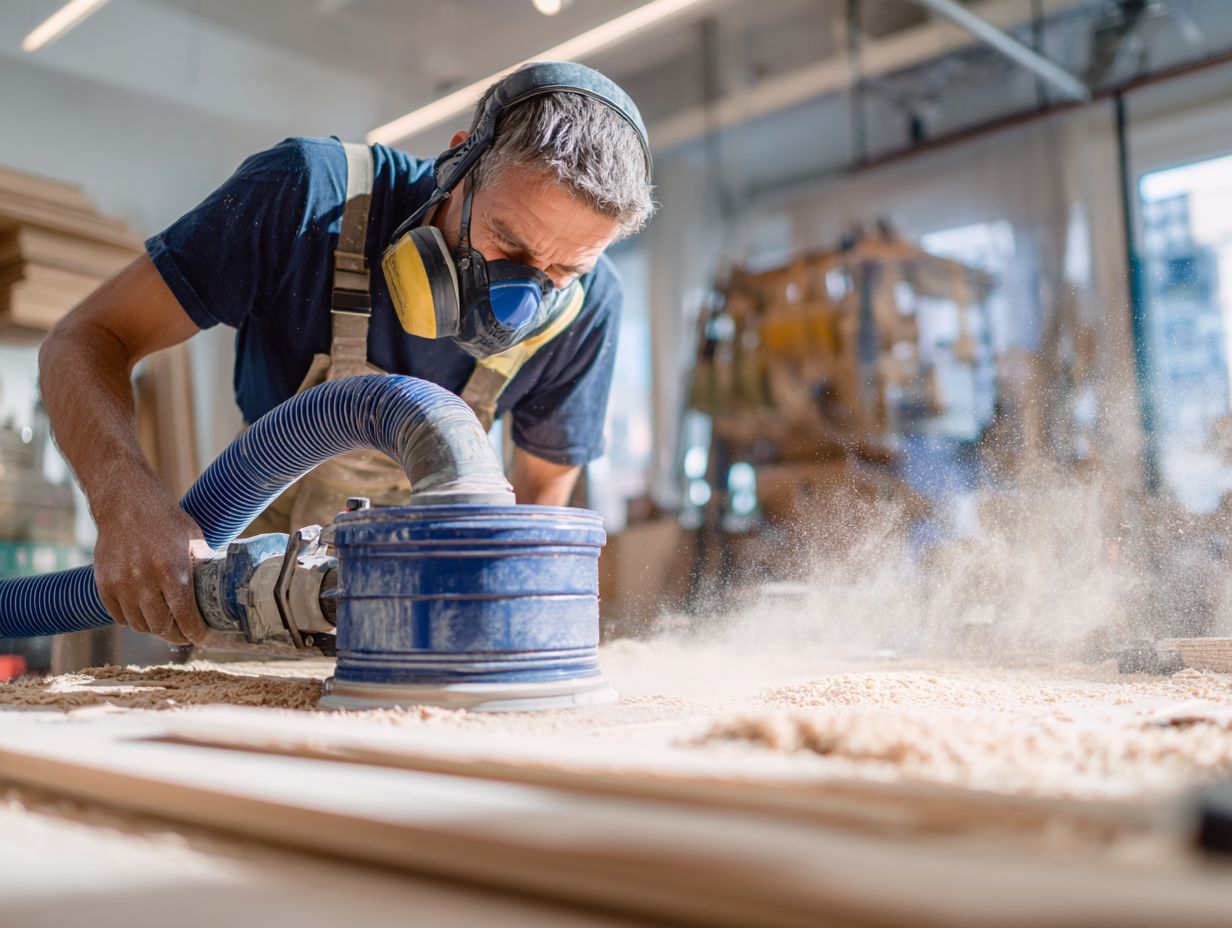
Post-sanding cleanup is simplified with dustless systems, allowing for quick removal of any residual debris and significant improvement in indoor air quality.
These systems use special vacuum attachments that collect dust directly, preventing it from landing on surfaces.
For instance, tools like the Festool Planex or Mirka DEROS integrate directly with your sanding equipment, ensuring minimal mess.
After sanding, quickly use a vacuum with a HEPA filter to get rid of small dust particles from floors and surfaces. Using microfiber cloths can effectively trap any lingering dust.
This combination improves the cleanliness of the area and cuts down the time needed for extra cleaning tasks.
Comparative Analysis
Looking at the differences, dustless sanding is better than traditional sanding, especially for health, the environment, and how well it works.
Dustless vs. Traditional Sanding
Dustless sanding outperforms traditional sanding by significantly reducing airborne particles, leading to healthier work environments and superior finish quality.
For example, while traditional sanding can generate high levels of dust, dustless systems use specialized vacuum attachments that capture debris at the source. This cuts down on cleaning time and makes the air inside better, making it ideal for home improvement tasks.
Tools like the Festool ETS 150/3 and the Mirka DEROS are top choices, effectively filtering dust while providing a smooth finish. Users often say they spend up to 75% less time cleaning and get better surface quality, which is important for high-end finishes and detailed work.
Cost Considerations
While the initial investment in dustless sanding equipment can be higher, the long-term savings from reduced cleanup time and improved health justify the costs.
Dustless sanding systems often cost between $1,500 and $3,500 initially, compared to traditional systems that may only require $300 to $800 but incur ongoing labor costs.
For a contractor handling ten projects monthly, transitioning could save up to 12 hours in cleanup weekly. With labor rates averaging $25/hour, that’s over $13,000 annually in savings.
Reduced airborne dust contributes to better respiratory health, cutting potential medical expenses down the line, which can yield an impressive ROI when factored into long-term business planning.
Common Applications
Dustless sanding systems are used in many places, like homes and businesses, because they work well and are better for health.
Residential Projects
Homeowners who are refinishing hardwood floors are choosing dustless sanding more often because it’s better for health and causes less mess during the work.
This method employs specialized sanders connected to vacuum systems, effectively capturing dust at the source.
For instance, using a Bona or Festool dust extractor can reduce airborne particles by up to 98%. Homeowners can expect less cleanup and improved air quality, especially beneficial for those with allergies or respiratory issues.
Studies show that this approach can lead to smoother finishes, enhancing the overall aesthetic of newly refinished floors. Dustless sanding makes the job easier and creates a healthier home.
Commercial Use
Dustless sanding is great for commercial areas because it lets you refinish surfaces without much disturbance to business activities.
This method speeds up sanding and cuts down on dust in the air, which is better for workers’ health and safety.
For instance, using a dustless sander like the Festool Planex can improve air quality compared to traditional methods. In a recent office renovation project, a contractor completed the job two days faster by utilizing this technology, allowing the business to resume normal operations sooner.
Dustless sanding leaves surfaces cleaner, minimizing the need for extensive post-sanding cleanup and ensuring that the work environment remains professional throughout the project.
Future of Dustless Sanding Technology
The outlook for dustless sanding technology is positive, with new developments focused on improving productivity and minimizing environmental impact.
Key advancements include improved filtration systems that capture nearly 99% of dust particles, significantly enhancing air quality. For example, companies such as Festool are adding HEPA filters to their sanders. This results in cleaner work areas and makes the machinery last longer.
Designs are becoming more ergonomic, with innovations such as lightweight materials and better grip for users. Expect new automatic functions soon that will smoothly connect with mobile apps, letting users check how things are working and what upkeep is needed from a distance.
Final Thoughts
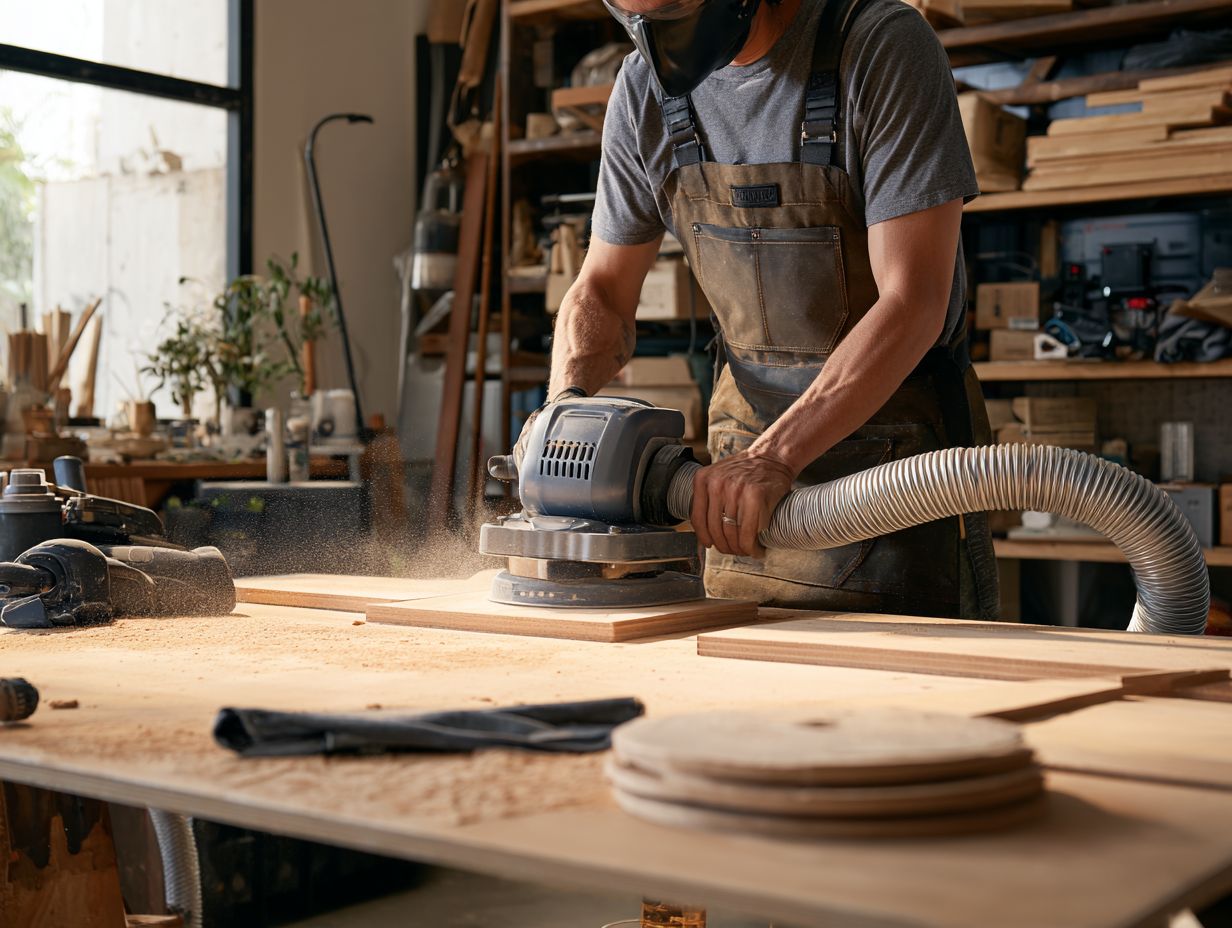
Using dustless sanding systems can result in better sanding quality and happier customers in flooring work.
Using tools like the Festool Planex or the Mirka Deros helps reduce dust during sanding.
The Festool Planex works well for big spaces with its extended reach and strong suction, while the Mirka Deros is ideal for detailed areas.
Both choices improve the finish quality and cut down on cleanup times a lot. Consider investing in a dust extractor that pairs with your sanding tool to maximize efficiency.
Improve your projects and watch satisfaction increase!
Frequently Asked Questions
What are dustless sanding systems and what are their benefits?
Dustless sanding systems are a type of sanding equipment that uses a vacuum system to collect dust and debris while sanding. This results in a cleaner and healthier working environment, as well as a more efficient and effective sanding process. Dustless sanding systems also minimize the risk of creating airborne particles that can be harmful to the respiratory system.
How does a dustless sanding system work?
A dustless sanding system uses a vacuum system that is attached to the sanding equipment, which collects the dust and debris as it is produced. The collected dust and debris are then deposited in a separate container, eliminating the need for dust bags or exhaust fans. This allows for a cleaner and more efficient sanding process.
What types of projects can benefit from the use of a dustless sanding system?
Any type of sanding project can benefit from the use of a dustless sanding system, including hardwood floor refinishing, drywall sanding, and furniture restoration. Dustless sanding systems are very useful in commercial and industrial environments, where big spaces need to be sanded fast and without creating a lot of dust.
Are there any health risks associated with traditional sanding methods?
Yes, traditional sanding methods can create large amounts of dust and debris that can be harmful to the respiratory system if inhaled. This is particularly concerning for individuals with allergies or asthma. Traditional sanding methods also create a mess that can be difficult to clean up, leading to potential health hazards and safety risks in the workplace.
Is a dustless sanding system more expensive than traditional sanding methods?
While a dustless sanding system may have a higher initial cost, it can result in cost savings in the long run. The efficient and cleaner sanding process can lead to faster project completion, resulting in less labor time and costs. The health benefits and less time spent cleaning can lead to savings over time.
How do I choose the right dustless sanding system for my project?
When choosing a dustless sanding system, it is important to consider the type of project and the features that are most important to you. Some factors to consider include the size and power of the vacuum, the size and type of sanding equipment, and the compatibility with different types of sanding materials. It’s always helpful to do research and read reviews to determine which system will best meet your needs.
